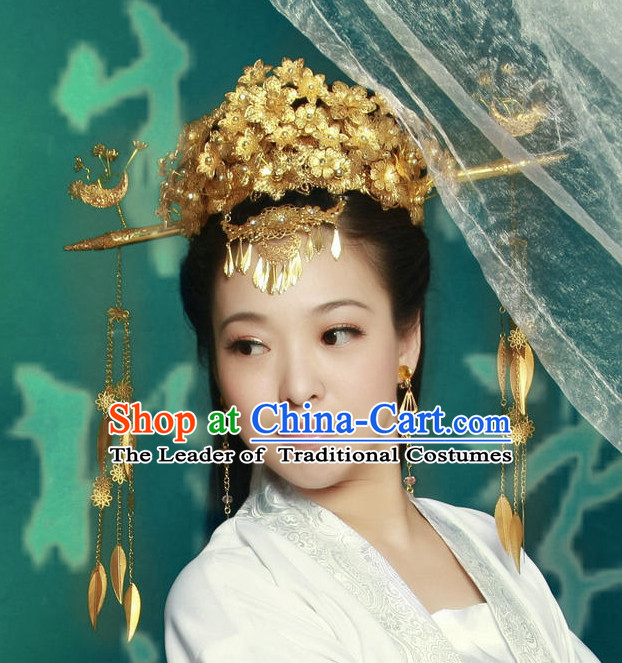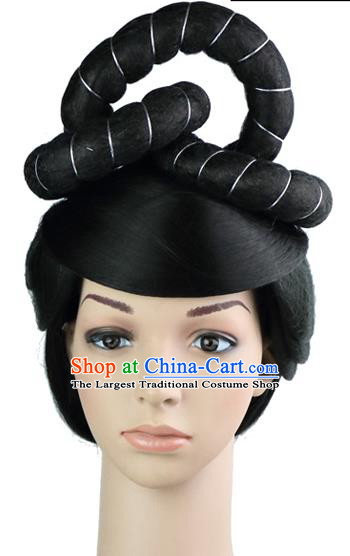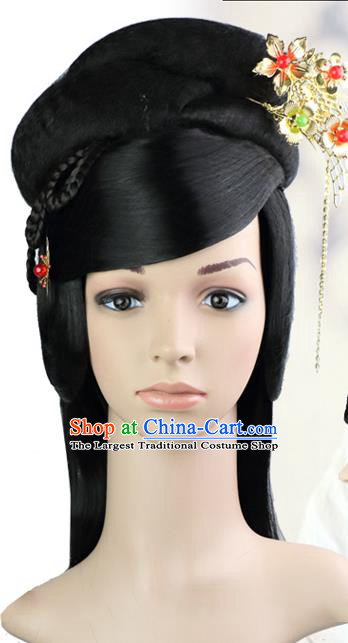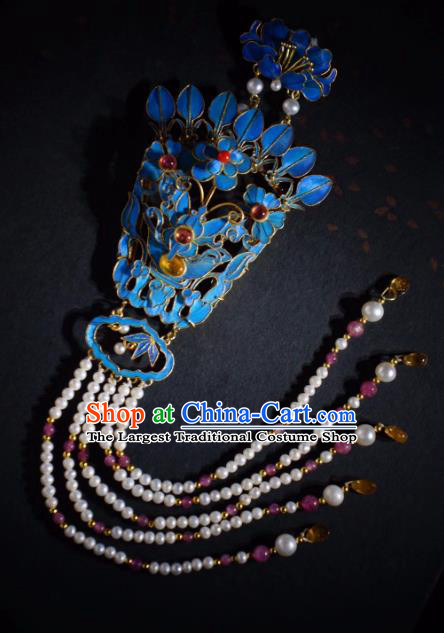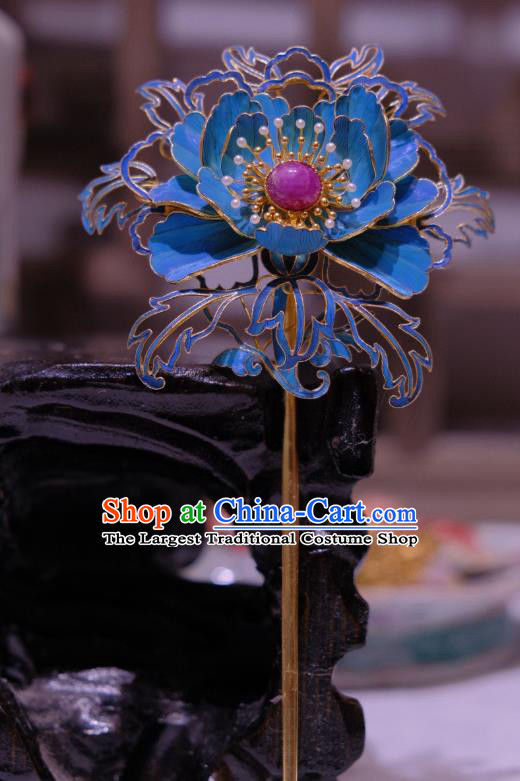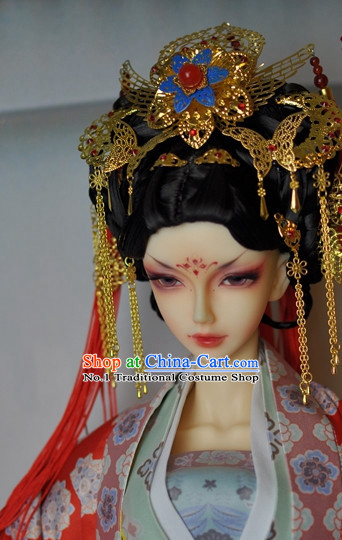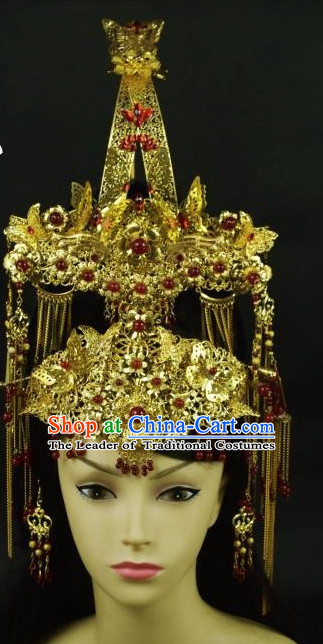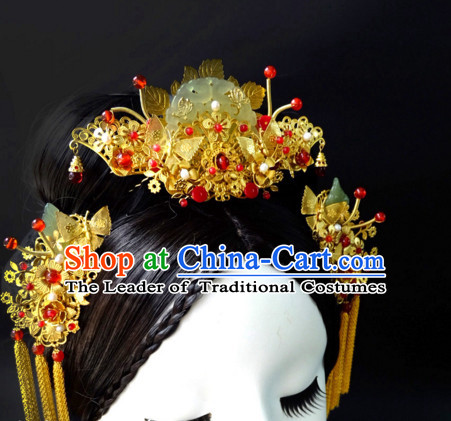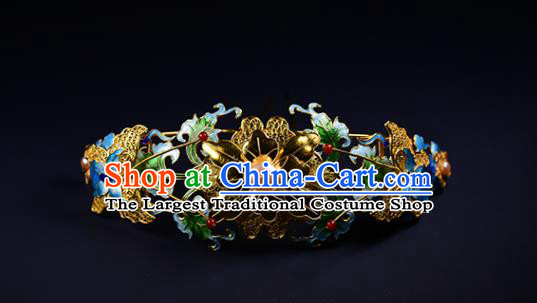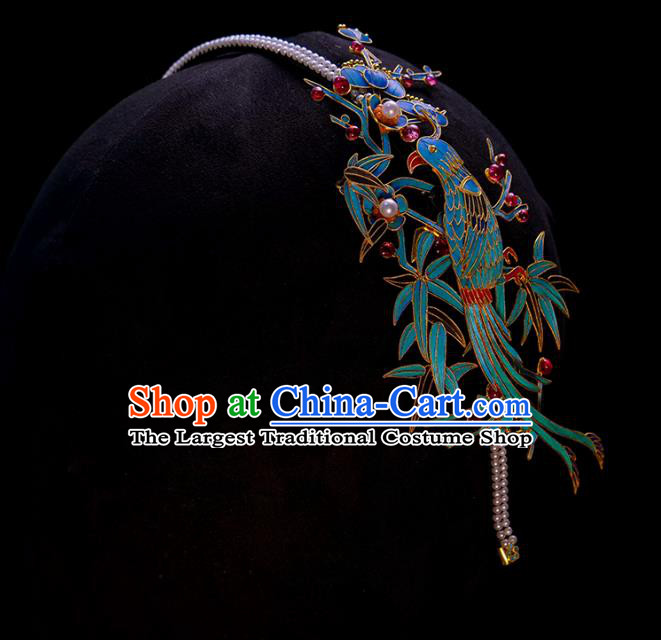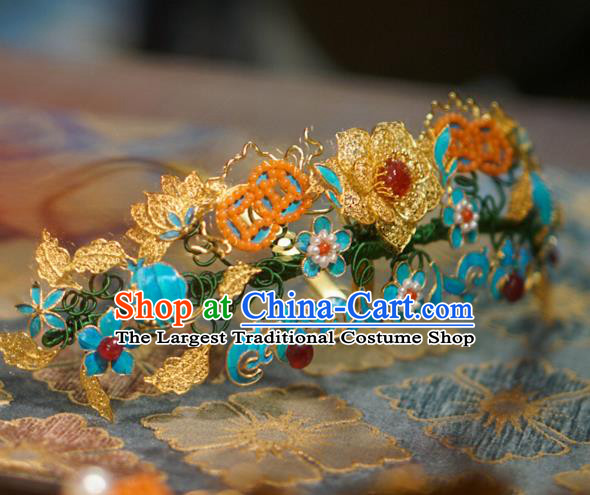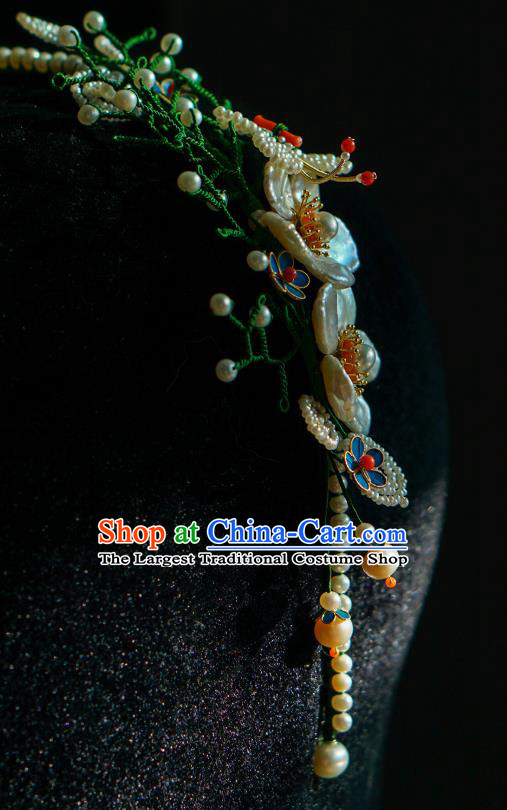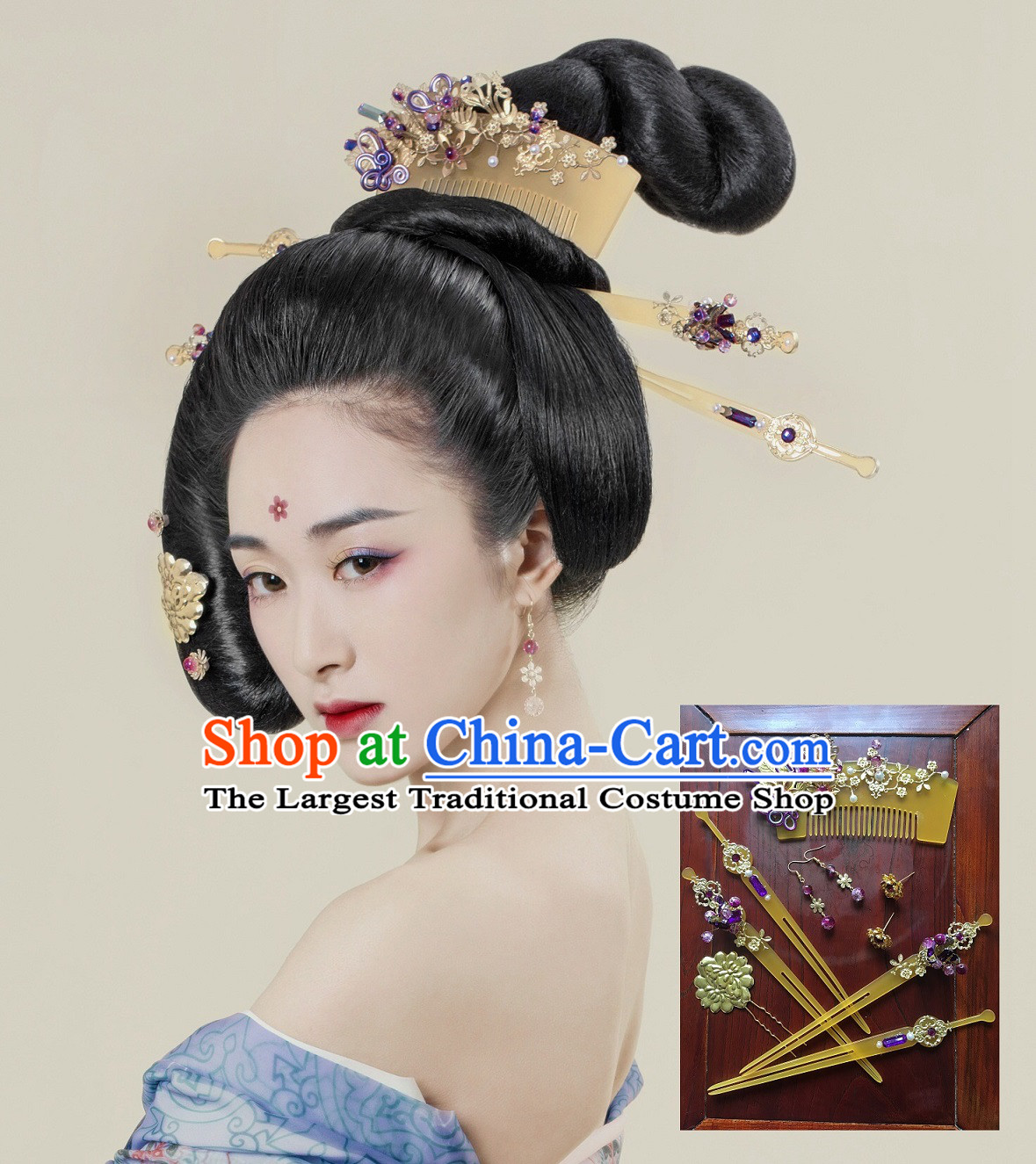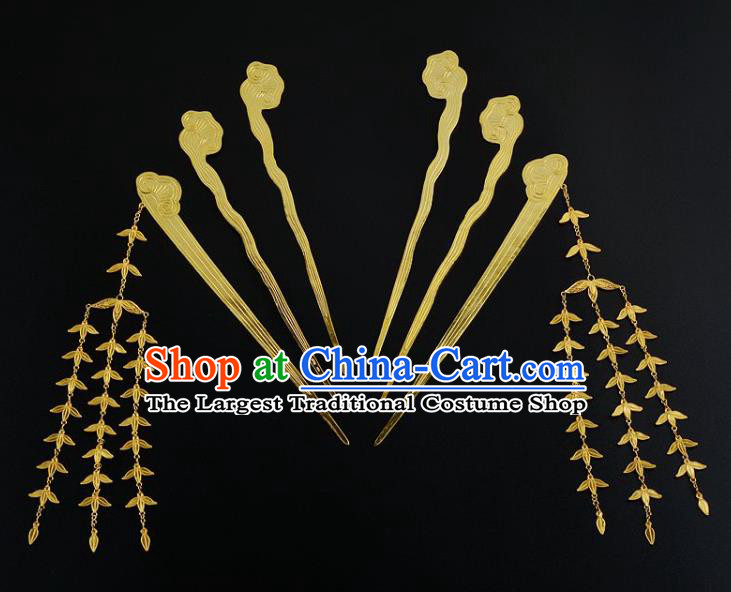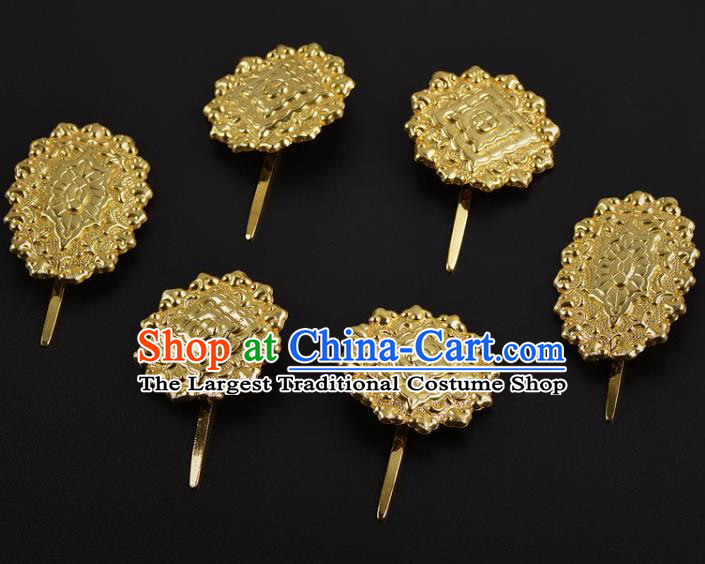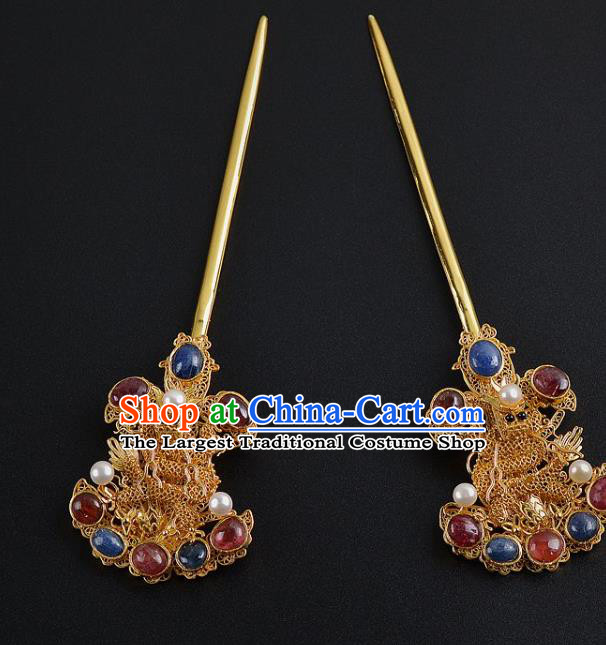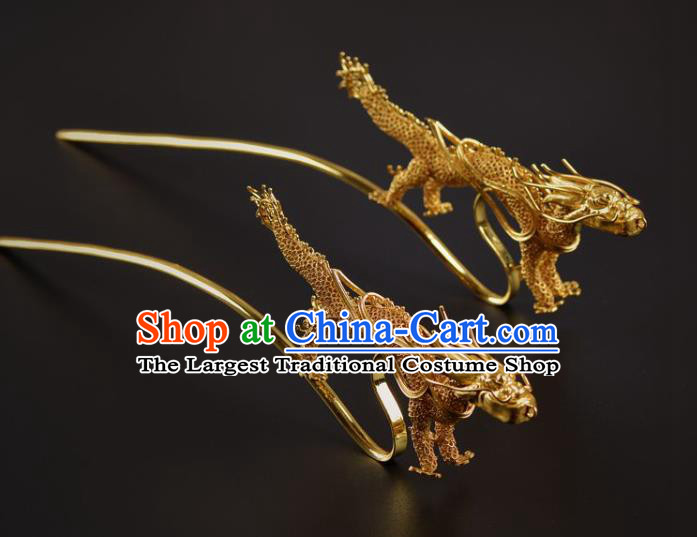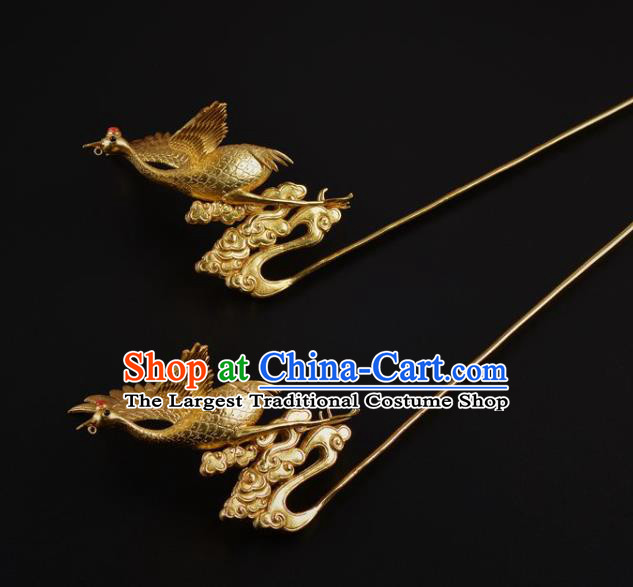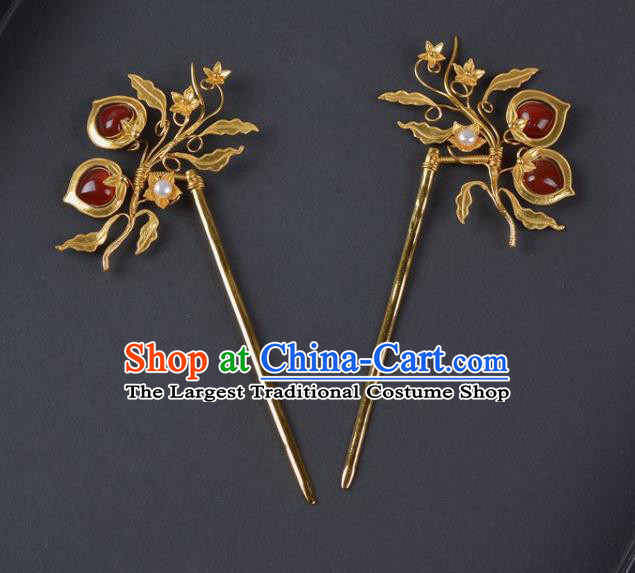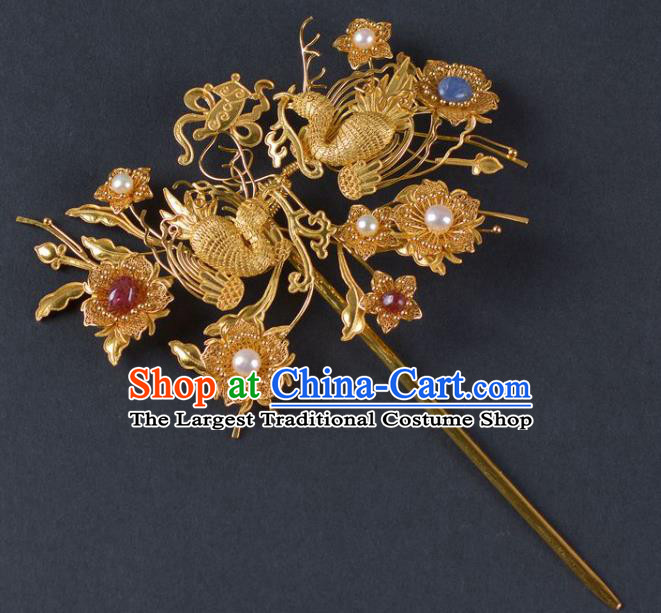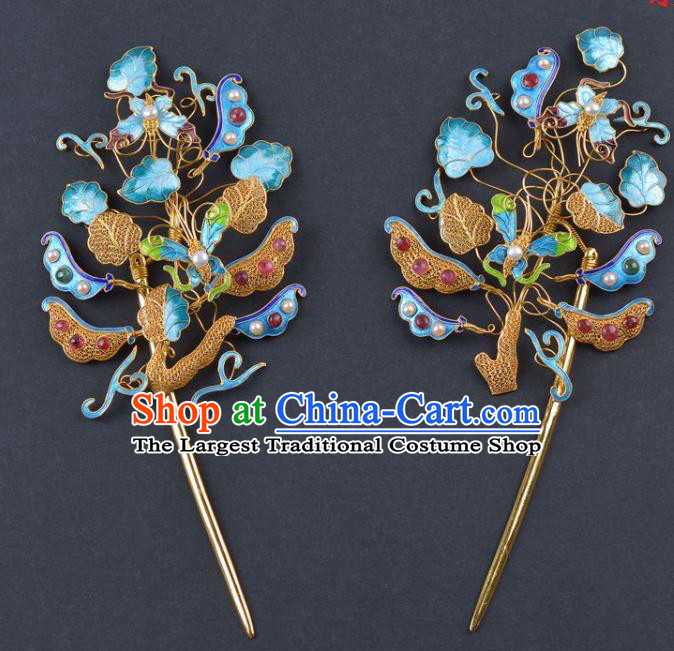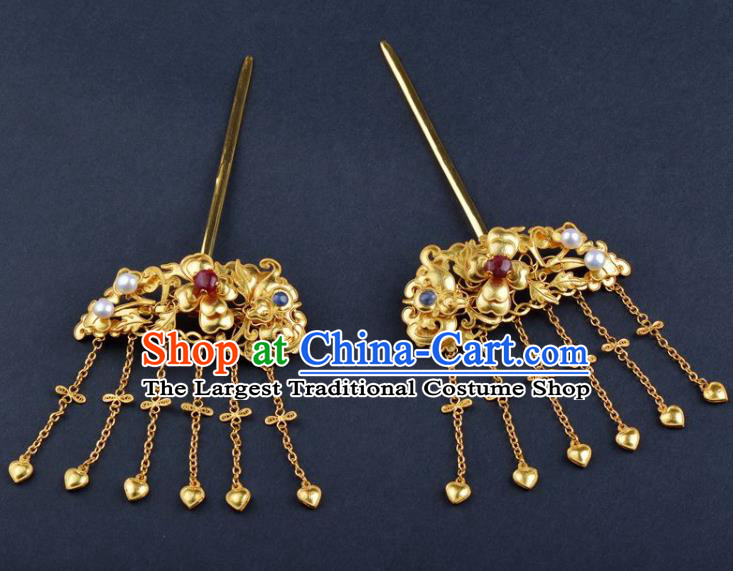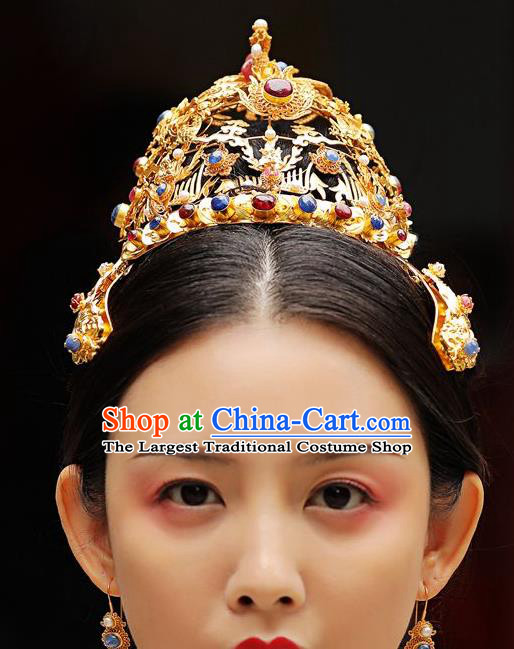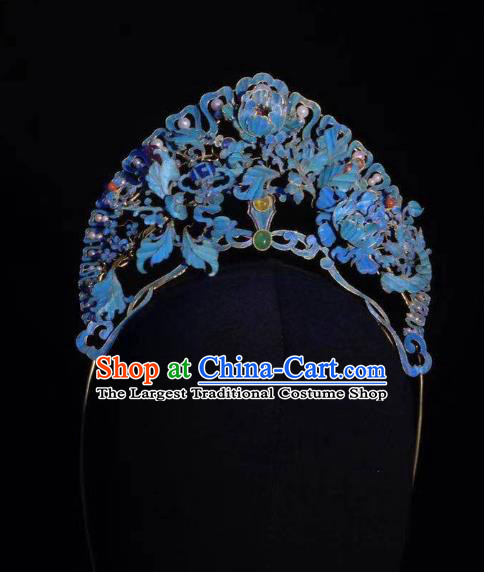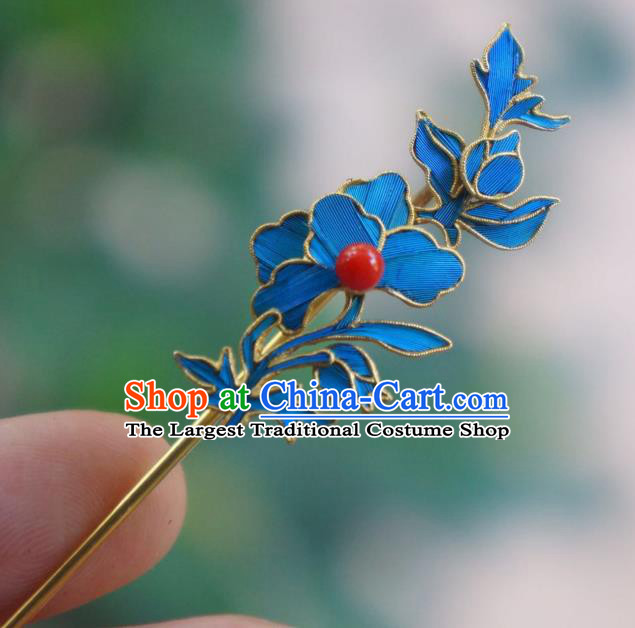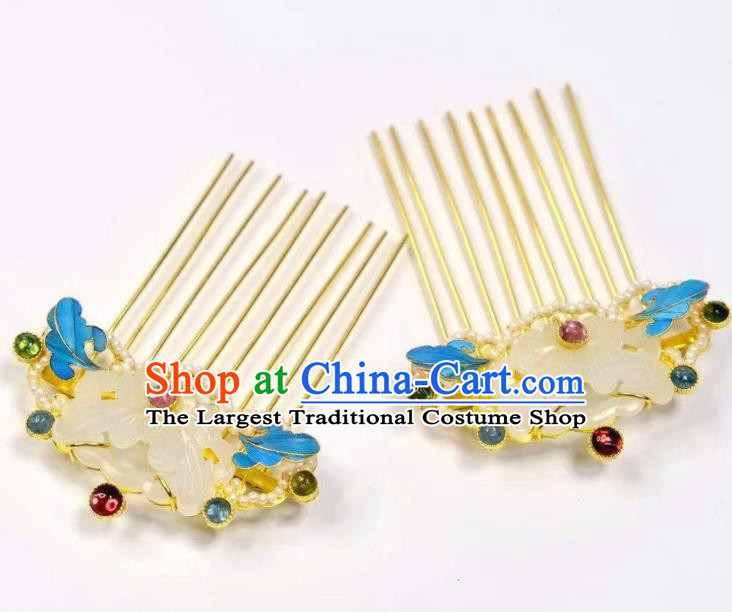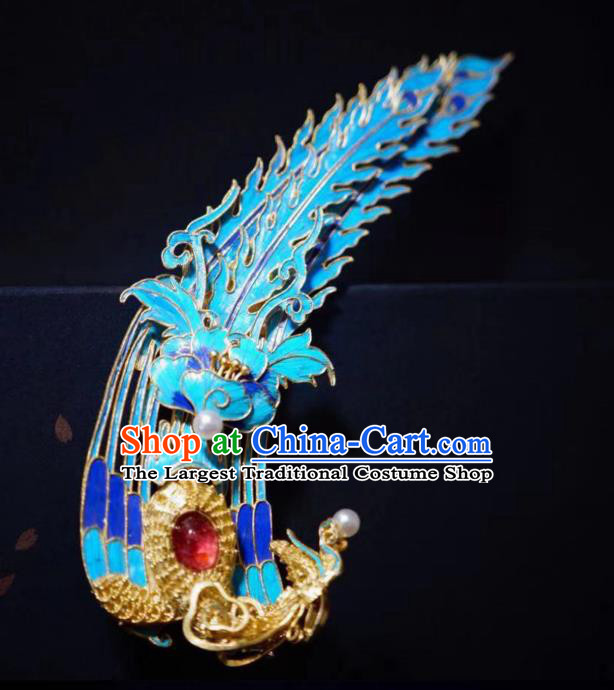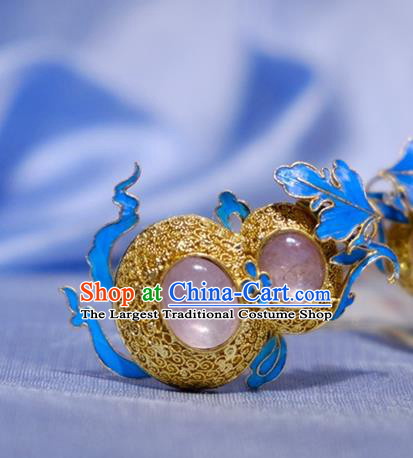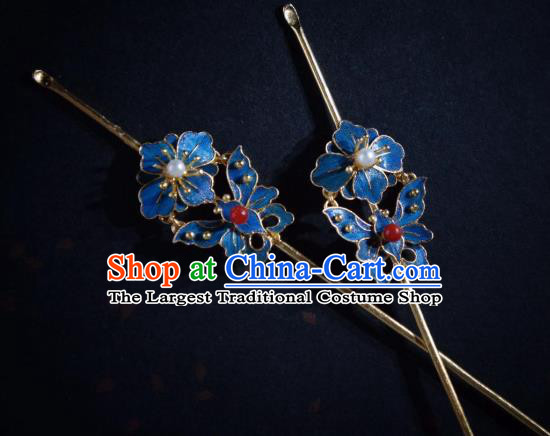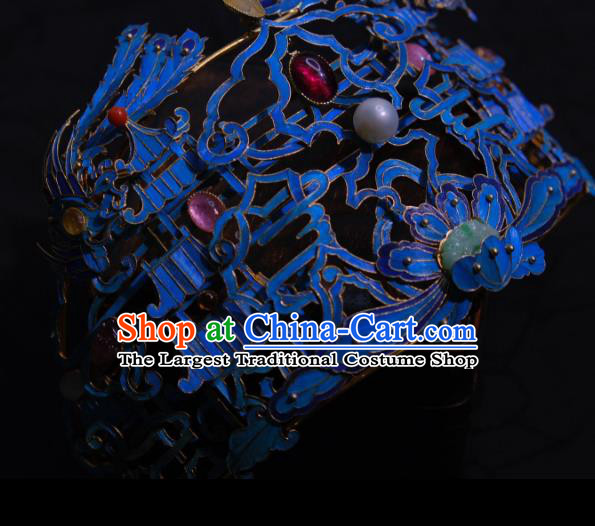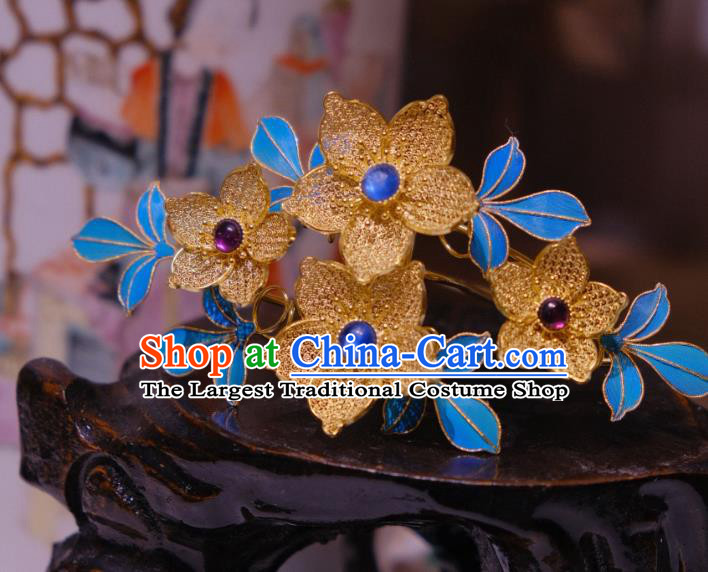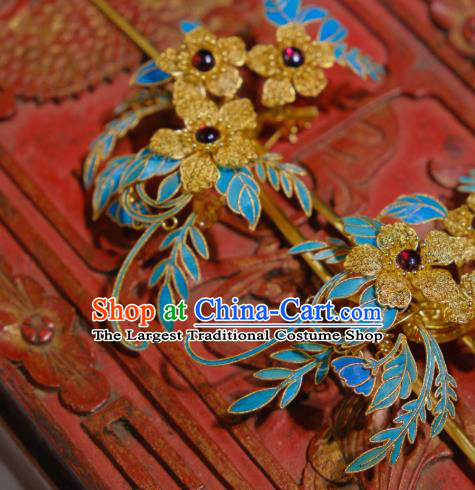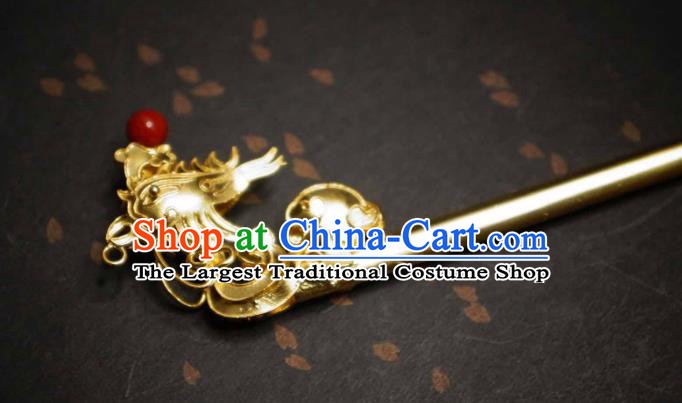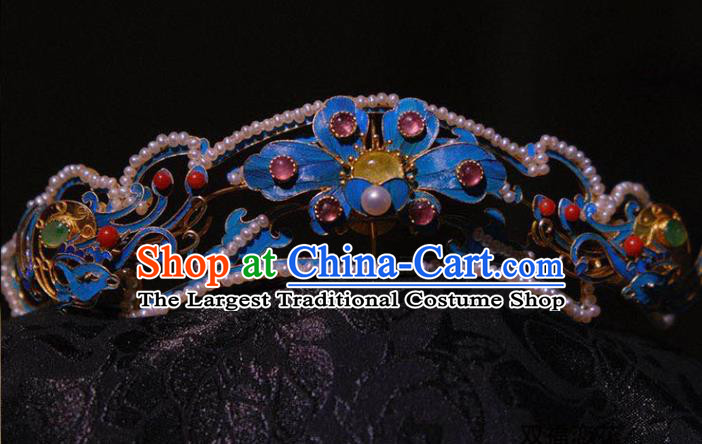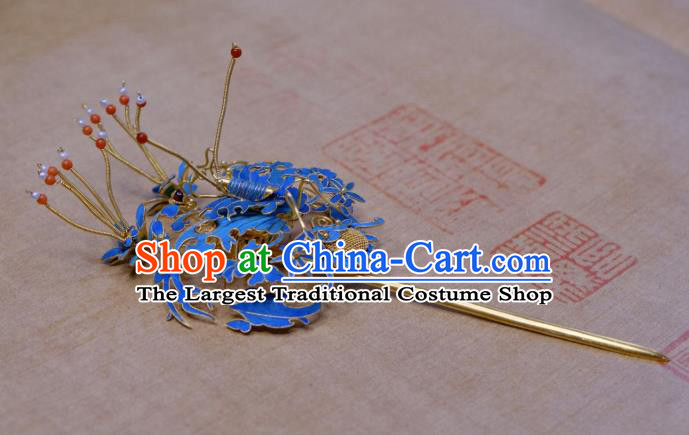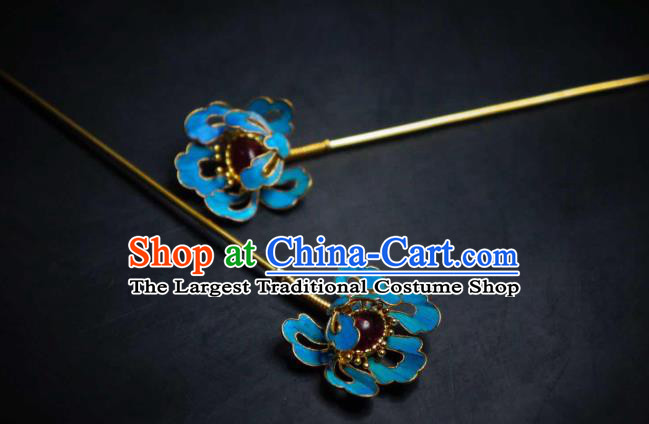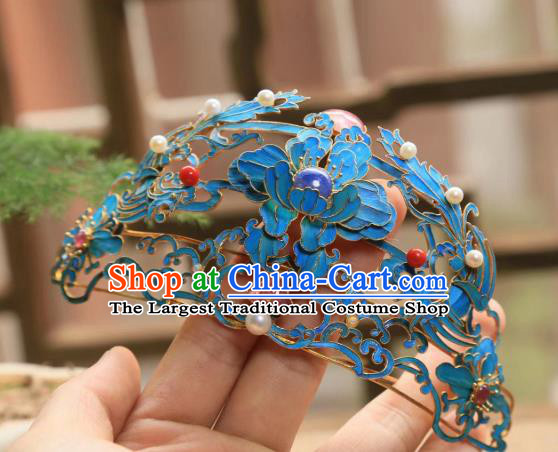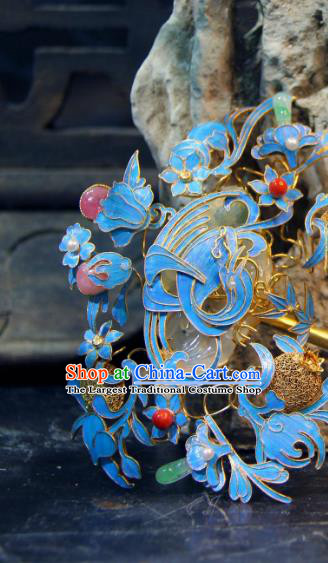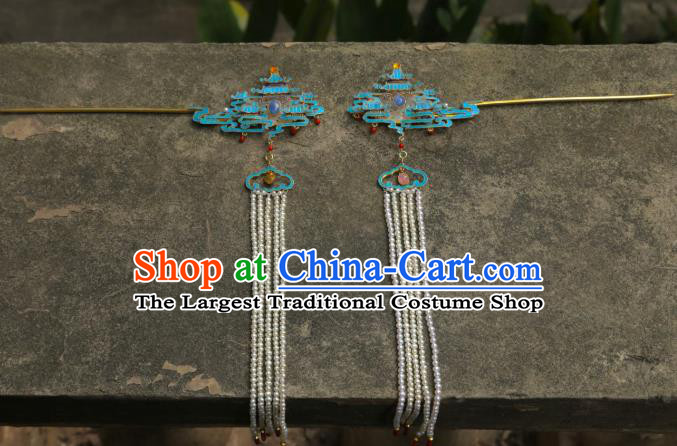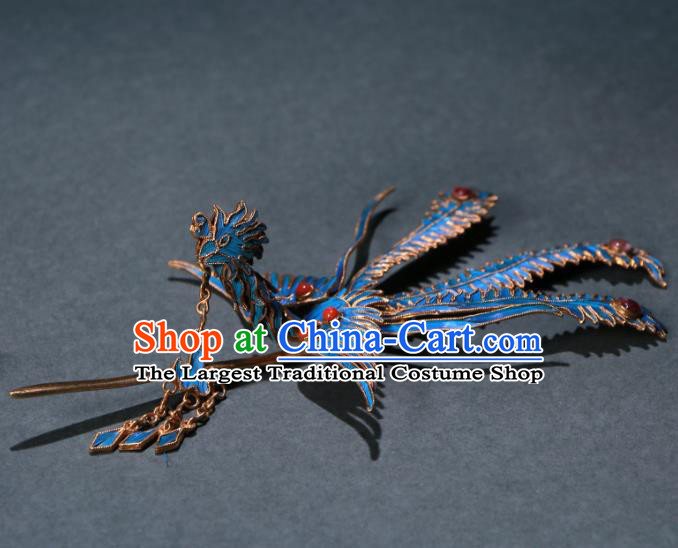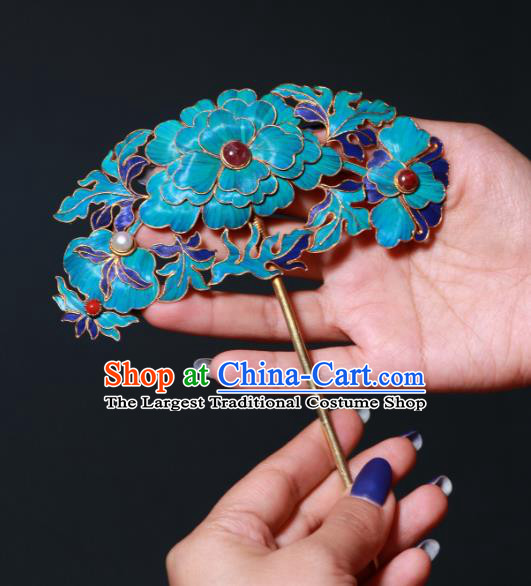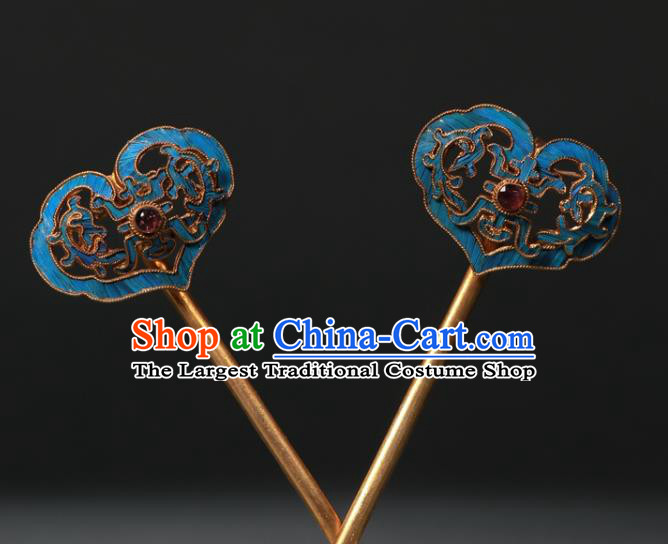
Click Related Pictures for More Audios:
Hair accessories of ancient Chinese empresses, such as crowns, hairpins, and buns, are an important part of ancient Chinese culture.
These accessories not only have practical functions but also carry rich symbolic meanings and historical values.
They reflect the aesthetic concepts, social status, and political power of that time.
In ancient China, the hair accessories of empresses were usually made of silk and decorated with precious materials such as gold, silver, gemstones, and pearls.
The designs of these accessories are exquisite and the craftsmanship is complex, showing the superb skills of the artisans at that time.
For example, the famous "phoenix crown and rosy veil," which refers to the empress's crown and cape, are world-renowned for their gorgeous decorations and unique designs.
Apart from being beautiful, these accessories also have certain symbolic meanings.
For example, the dragon pattern on the crown may represent imperial power and authority; the beads on the bun may symbolize wealth and status; and the flowers on the hairpin may imply auspiciousness and happiness.
These symbolic meanings make the hair accessories of empresses a powerful identity symbol while also reflecting the social hierarchy system and etiquette norms of that time.
As time goes by, these accessories gradually evolve into various styles and designs to meet the needs of different periods.
However, their design concepts and symbolic meanings are still preserved today, becoming an important clue for studying ancient Chinese culture.
By appreciating these exquisite accessories, we can better understand ancient Chinese aesthetic concepts, artistic achievements, and social customs related to the royal family.














